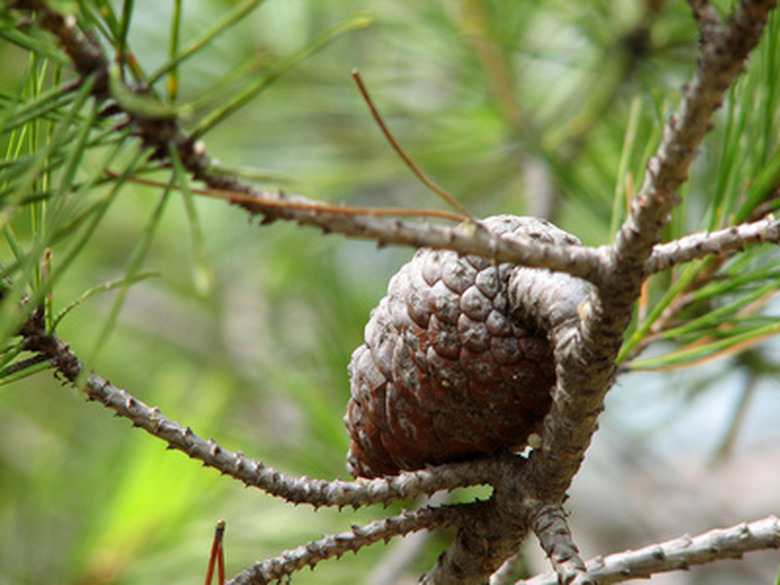Names Of Seed Plants
Seed plants are "spermatophytes," meaning that they produce seeds, the basis for the reproduction and growing capabilities of the plants humans and animals depend upon most. Production of food and the natural plant-rich landscapes of the world are a result of seed plants. From small flowering plants to large conifers like pine trees, seed plants make up a significant part of the Earth's ecosystem.
Seed plants are "spermatophytes," meaning that they produce seeds, the basis for the reproduction and growing capabilities of the plants humans and animals depend upon most. Production of food and the natural plant-rich landscapes of the world are a result of seed plants. From small flowering plants to large conifers like pine trees, seed plants make up a significant part of the Earth's ecosystem.
Pines
Pine trees (Pinus species) are coniferous plants that produce seeds and display a wide variety of characteristics. Pine trees display needle-like leaves in colors of blue-green, green and gray green with fine to coarse texture. Pines also develop pinecones, the brown to purple-hued fruit of the tree that grow up to 10 inches in length. Pine trees thrive in full sun exposure and need moist, well-drained soil. Once established, pines reach a height of 4 to 100 feet, depending upon the variety, according to the Clemson University Extension.
- Seed plants are "spermatophytes," meaning that they produce seeds, the basis for the reproduction and growing capabilities of the plants humans and animals depend upon most.
- Pine trees (Pinus species) are coniferous plants that produce seeds and display a wide variety of characteristics.
Magnolias
Magnolias (Magnolia species) are plants that actually display their seeds in the center of the flower. Magnolia flowers appear in varying shades of whites, creams, purples and pinks with deciduous, semi-evergreen or evergreen foliage. Blossoms often emit a pleasing fragrance. When grown from seeds, development is unpredictable; a tree may bloom within a time period of anywhere from three to 20 years, according to the Clemson University Extension. Thriving in full sun to partial shade, magnolias prefer rich, well-drained soil with a pH of 5.0 to 6.5. Depending on the variety, magnolia trees reach a height of up to 80 feet with a spread of up to 60 feet. Magnolia flowers grow to a diameter of 12 inches.
- Magnolias (Magnolia species) are plants that actually display their seeds in the center of the flower.
- Depending on the variety, magnolia trees reach a height of up to 80 feet with a spread of up to 60 feet.
Redwoods
Redwood trees, also named coast redwoods (Sequoia sempervirens), are considered the tallest trees in the world, according to the University of Florida IFAS Extension. These seed plants are prized for their extreme height as well as their visually pleasing bark that becomes bright orange on well-established trees. Pyramidal in shape, redwoods display simple, needle-like green leaves and small cones that reach up to an inch in length. Thriving in full sunlight to partial shade, redwoods love moisture and grow in a variety of soil types, including wet sites, and are often found near streams. Redwoods reach a towering height of 60 to 120 feet with a spread of 25 to 35 feet.
